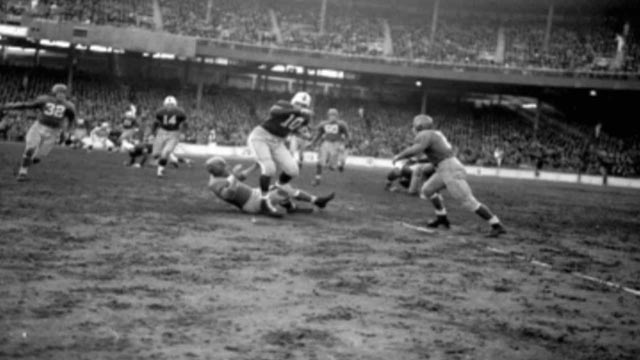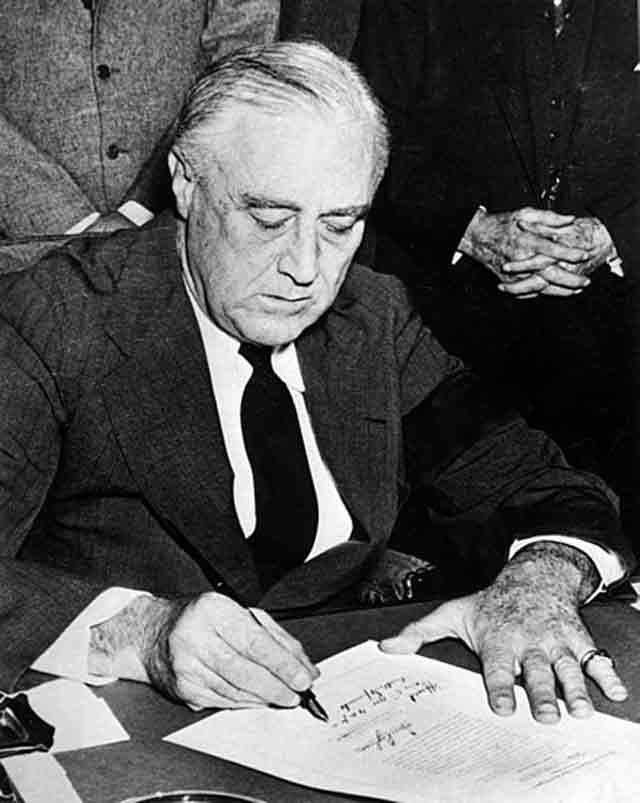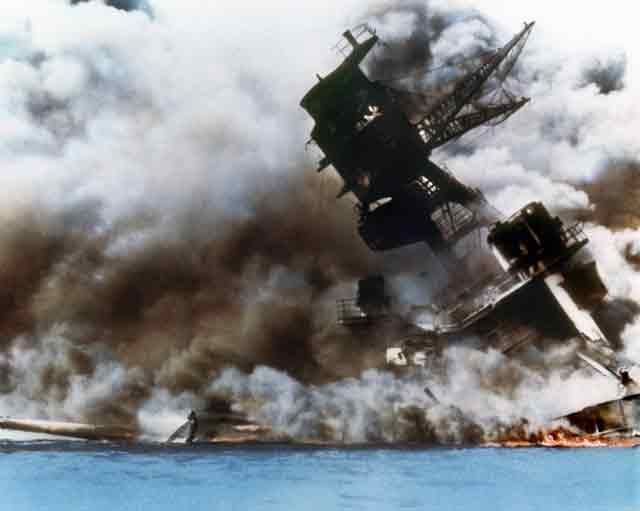Lots of Rumors and Misinformation About Pearl Harbor
The attack on Pearl Harbor was extremely destructive and deadly to the U.S. military bases and civilians in Hawaii. The numbers can be looked up easily: 2,403 Americans killed and 1,178 others wounded, eight U.S. Navy battleships damaged and four sunk, three cruisers, three destroyers, an anti-aircraft training ship, and one minelayer damaged or sunk, and 188 U.S. aircraft destroyed. Those are pretty savage numbers. But when did all the details of the Pearl Harbor attack actually reach the public?
Some people would say that the public never actually learned the totality of the circumstances surrounding the Pearl Harbor attack. There certainly have been many theories with some validity to them, and these began relatively soon after the attack. However, let’s leave aside fringe theories and focus on the public release of facts and figures about the attack.
Initial Reports of the Pearl Harbor Attack
Of course, the fact of the attack itself was reported far and wide within hours. Recruiting centers were jammed the next day. However, there were no reliable public details, and what details were given were just broad-brush strokes that a lot of ships had been sunk and people killed. Here is a transcript of a radio broadcast "a few hours" after the attack began:Hello, NBC. Hello, NBC. This is KTU in Honolulu, Hawaii. I am speaking from the roof of the Advertiser Publishing Company Building. We have witnessed this morning the distant view a brief full battle of Pearl Harbor and the severe bombing of Pearl Harbor by enemy planes, undoubtedly Japanese. The city of Honolulu has also been attacked and considerable damage done. This battle has been going on for nearly three hours. One of the bombs dropped within fifty feet of KTU tower. It is no joke. It is a real war. The public of Honolulu has been advised to keep in their homes and away from the Army and Navy. There has been serious fighting going on in the air and in the sea. The heavy shooting seems to be . . . a little interruption. We cannot estimate just how much damage has been done, but it has been a very severe attack. The Navy and Army appear now to have the air and the sea under control.This was news from an eyewitness, but notice even this reporter can't provide details aside from what he saw with his own eyes. The general news of the attack filtered out to radio listeners (there were very few television sets at the time) slowly throughout the day.
 |
| The 7 December 1941 football game between the Giants and the Dodgers went on after initial reports of the Pearl Harbor attack, but the radio station broke away. |
The NBC Blue radio network (later ABC) interrupted its show “The Great Inspector” with an emergency bulletin but immediately returned to its regular programming. CBS began its 2:30 p.m. broadcast of “The World Today” with announcer John Daly providing news of the attack. There really was no news to provide other than that there had been an attack, the likelihood that it meant war, and a summary of past diplomatic events.
Initial news releases by the government were fragmentary and inaccurate, in part because of security concerns but more importantly because even top US officials didn’t know the scope of the damage for some time.
 |
| Reporters run for the telephones in the West Wing of the White House after the first briefing on the attack on 7 December 1941. |
 |
| President Roosevelt signs the declaration of war. |
Air Raid Pearl Harbor. This is no drill.The message was picked up by many other radio stations, including at Naval Communications in Washington. Chief of Naval Operations Admiral Harold Stark just happened to be walking down the hallway nearby when the message came in and was the first to know. Respecting his own chain of command, he informed Secretary of the Navy Frank Knox, who received it right around 8 a.m. Hawaii time 1:30 p.m. Washington time). Knox phoned it to President Roosevelt at 1:47 local time. The message was notable for its failure to identify who was conducting the air raid - but anyone could figure that out. So, everybody was just passing along that there had been an attack.
Details remained scarce for days even for top US officials. President Roosevelt gave few details about the attack in his famous "Day of Infamy" speech on 8 December 1942. Even the general facts he did give were not entirely representative of the true situation:
The attack yesterday on the Hawaiian islands has caused severe damage to American naval and military forces. I regret to tell you that very many American lives have been lost. In addition, American ships have been reported torpedoed on the high seas between San Francisco and Honolulu.While there may have been reports of ships being torpedoed near the US coast, that doesn't seem to have been the case. So, the misinformation began immediately. This is a cautionary tale about trying to be too precise before you gather all the facts. Of course, Roosevelt didn't need to worry about niceties at a time like that. The US government may not have known the entirety of the situation when Roosevelt gave that speech, but it certainly knew enough to declare war.
 |
| The Joint Report on the Pearl Harbor attack was the first examination of the attack available to the public. |
Information about the Pearl Harbor attack dribbled out in the following months
As usual, families of those lost at Pearl Harbor were notified of their loss. These notifications made their way into local newspapers during February 1942. Thus, that is when those most affected - the families - were first learning something concrete about the attack. Naturally, these accounts identified what ships the men had been serving on, and it was no secret from the earliest days that battleships such as the USS Arizona had been targeted. |
 |
There was some film of the attack that made it into various Hollywood productions during 1942 such as “Spy Ship” starring Keye Luke. However, these snippets just gave a fragmentary view of events. The first rigorous and fairly accurate representation was a propaganda film directed by legendary auteur John Ford and Gregg Toland (the cinematographer for "Citizen Kane"). This film, “December 7th: The Movie,” was released by the Office of War Information in 1943. This was an excellent film with a great overview of what actually happened. However, after thinking it over, the US Navy thought it was a little too revealing. The military censored the film and cut it down from 82 minutes to 32 minutes and even some versions of 20 minutes. The shortened version was good enough to win the 1944 Oscar for Best Documentary, Short Subjects. The film actually questioned why the surprise attack was allowed to happen, so you can imagine the military’s reluctance to let that out during the war.
 |
| A still from "December 7, 1941: The Movie" (1943). |
 |
| A diver examines the gunner's forward turret on a PBY-5 Catalina resting on its right side. Credit: Credit: UH Marine Option Program. |
Conclusion
As we can see, information about the Pearl Harbor attack dribbled out over many years. In a sense, it is still dribbling out. This is not unusual. For instance, there have been new theories and facts being uncovered about the sinking of the Titanic in recent decades. So, pick what you mean by “learned about” and that will lead you to the proper time frame, because there is no definitive answer. There were a lot of reasons for the authorities to keep reports low-key, including national security, propaganda purposes, the impact on the Roosevelt administration before the 1944 election, and the lack of detailed information before a full study was made. As shown by President Roosevelt's famous speech, even those with the best of intentions may simply have had bad information to spread.I also have a collection of color photos and GIFs of the Pearl Harbor attack here. Also, there is an hour-by-hour summary of the attack here.
2019






No comments:
Post a Comment